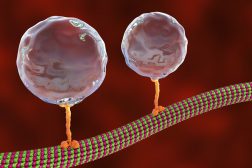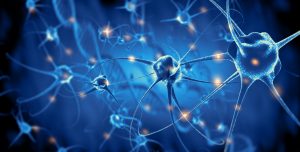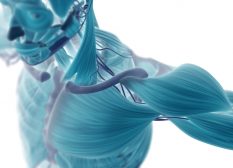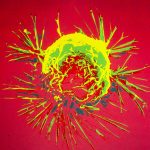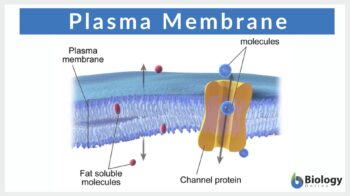
Plasma membrane
n., plural: plasma membranes
A biological membrane, such as a cell membrane surrounding a cell
Table of Contents
Do all cells have a plasma (or cell) membrane? Yes, all cells have a biological membrane that separates the protoplasm from the external environment. That includes plant cells, which have another distinctive outer layer, the cell wall, that is not present in animal cells. Both animal and plant cells have a plasma membrane essential to cellular homeostasis. So while they may differ in certain aspects, both animal and plant cells have a cell wall that is essentially the same in terms of structure and function. Similarly, prokaryotes also have a plasma membrane (also referred to as the prokaryotic cytoplasmic membrane), the same way that fungi, algae, protists, and other organisms have. In this article, all aspects of the plasma membrane will be explored in detail.
Plasma Membrane Definition
What is a plasma (or cell) membrane? Where is it found?
The plasma membrane is a biological membrane that surrounds every living cells to separate the internal components from the outside. It guards the cell against the various external stressors or substances. It is composed of a phospholipid bilayer, proteins, lipids, carbohydrates, and other components. The distinctive components of the plasma membrane make it a selectively permeable barrier.
It is “semi-permeable” because it regulates what goes in and goes out through cellular transport mechanisms. It also facilitates the transmission of cellular signals. It is very flexible, allowing certain cells, such as red blood cells and white blood cells, to change shape as they pass through narrow capillaries.
The plasma membrane is a biological membrane that is made up of a bilipid layer of phospholipids, as well as membrane proteins and carbohydrates. It is semi-permeable and guards the intracellular components against various external stressors or substances. Synonyms: plasmalemma; cell membrane; cytoplasmic membrane.
Why it is called a plasma membrane? The cell contains a protoplasm (or simply plasm), which is the semi-fluid living matter. This living matter or plasm is contained inside a biological membrane referred to as the plasma membrane. Because it surrounds the entire cell, this plasma membrane is specifically referred to as the cell membrane.
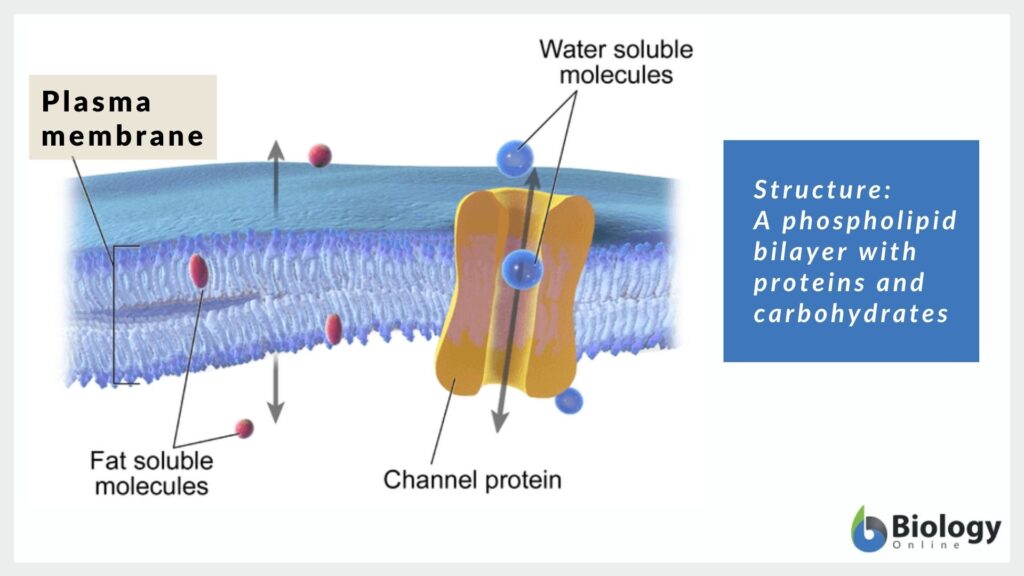
Plasma membrane vs. cell membrane
As already pointed out, the cell membrane is the plasma membrane surrounding the cell. The term “plasma membrane” also includes the biological membranes that form the outer boundary of the internal compartments (organelles). (Ref. 1) Thus, strictly speaking, the plasma membrane is a more wide-ranging term as it includes the lipid bilayer membranes of the organelles, apart from the cell membrane, which, in this case, is the plasma membrane that sets the boundary between the cell and its external environment.
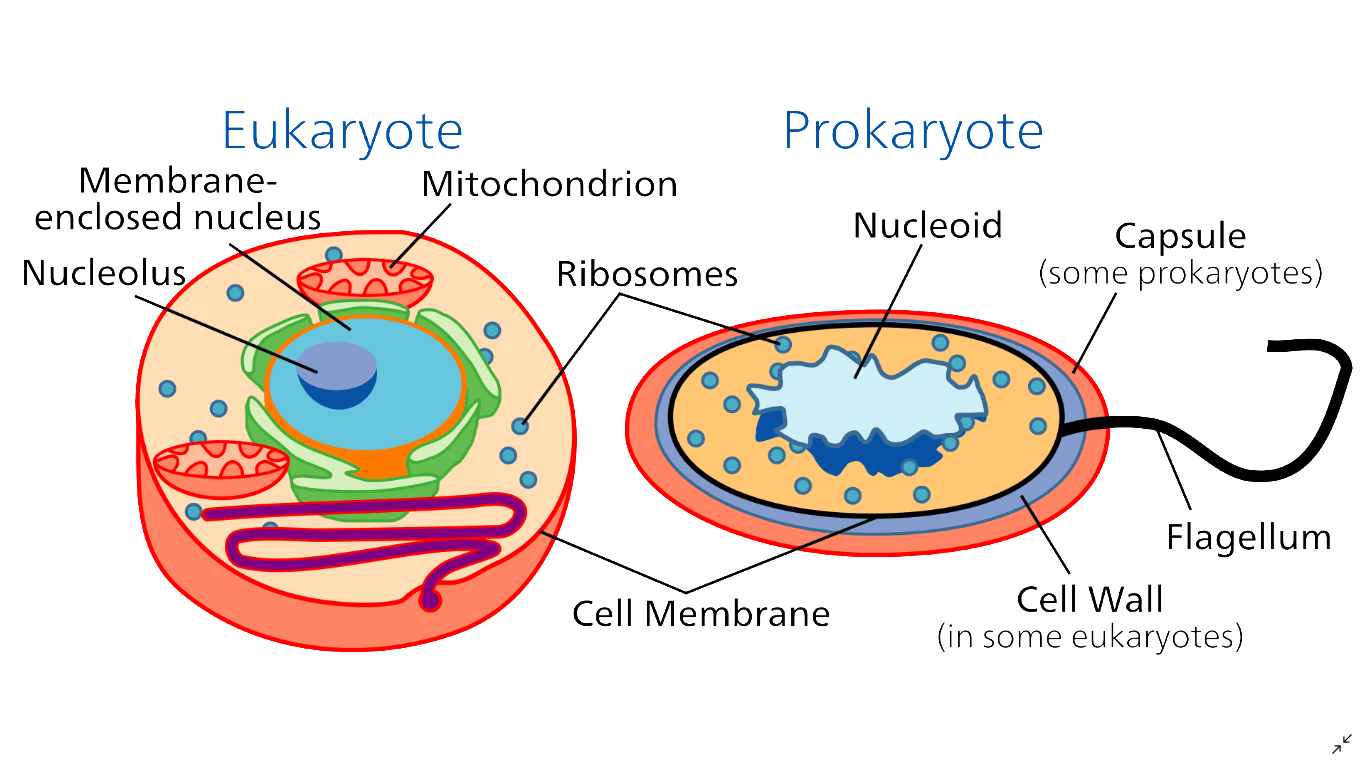
Cell membrane
- The entirety of the components of the cell area is covered by the cell membrane.
- It plays a significant role in cytokinesis during cell division.
- It is a target for molecules and other agents to gain entry inside the cell.
- It regulates the passage of molecules and ions into and out of the cell.
- It facilitates cell signaling between cells.
Plasma membrane
- The plasma membrane surrounds the cell and the internal compartments or cell organelles.
- Not all play a significant role in cytokinesis during cell division.
Cell membrane vs. cell wall
The cell wall is another membrane layer present in some cells, such as plant cells. It forms on the outside of the cell membrane. It renders plant cells the rigidity and strength they need against mechanical stress. So while the cell membrane is incapable of protecting a cell from bursting as a result of excessive water influx, the cell wall stabilizes the plant cell thereby protecting it from osmotic lysis as water moves into the cell. This is important in plant cells because they need their cells to remain turgid (swollen) and not wilted.
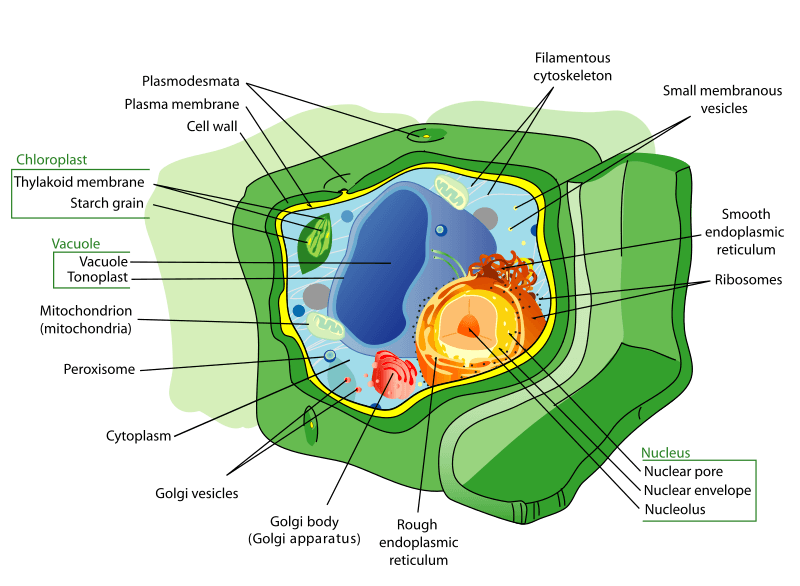
Functions of the Plasma Membrane
What is the function of the plasma or the cell membrane? This membrane serves as a barrier between the inside and the outside. The details are explained further below.
-
A Physical Barrier
All cellular content is physically separated from the extracellular fluid by a cell membrane. This safeguards all the parts of the cell from the external environment and enables separate activities to occur within and outside the cell. The same holds true to organelles. Their plasma membrane allows internal compartmentalization. Thus, biological activities may occur separately and simultaneously from one another.
-
Semi-permeability
Plasma membranes are semi-permeable, which means only certain molecules can pass through the membrane. The membrane allows easy travel of water, oxygen, and carbon dioxide. Normally, ions (e.g. potassium, sodium) and polar molecules are unable to pass through the membrane easily; instead of freely diffusing, they must pass through proper channels or pores in the membrane. This way the membrane can regulate the rate at which the cell can enter and exit such molecules.
-
Endocytosis and exocytosis
Endocytosis occurs when a cell ingests comparatively greater substances than single ions or molecules that move through pores. A cell may take in large amounts of molecules or even entire bacteria from the extracellular fluid by endocytosis. Exocytosis is when these substances are released by the cell. In all these processes which occur in the cell, a significant role plays by the cell membrane. The structure of the membrane itself varies such that the molecules may enter or leave the cell.
-
Cell signaling
The facilitation of communication and signaling between cells is another essential characteristic of the membrane. This is achieved by the use of different proteins and carbohydrates in the membrane. Proteins “mark” the cell so that it can be detected by other cells. The membrane has also receptors that allow it to perform certain tasks as molecules, such as hormones bind to these receptors.
The function of the cell membrane in an animal cell is to regulate what moves in and out of the cell. The transport of substances through the membrane may either take place without the use of cell energy or cause the cell to consume energy while transporting it. As a result, the cell membrane is used as a specific channel that allows only a few substances to enter and leave the cell.
Common Biological Processes or Activities
Diffusion
Molecules or other particles that randomly disperse or migrate from higher-concentration to lower-concentration region until equilibrium occurs. At equilibrium, diffusion persists but net flow balances remain the same. Diffusion is one method of passive transport that does not require cellular energy to be consumed. A molecule may move through the cell membrane passively if it is lipid-soluble, uncharged, and very small or if it is supported by a carrier molecule. Unassisted diffusion of very small or lipid-soluble particles is referred to as simple diffusion. See Figure 1. The diffusion process that is aided is known as facilitated diffusion.
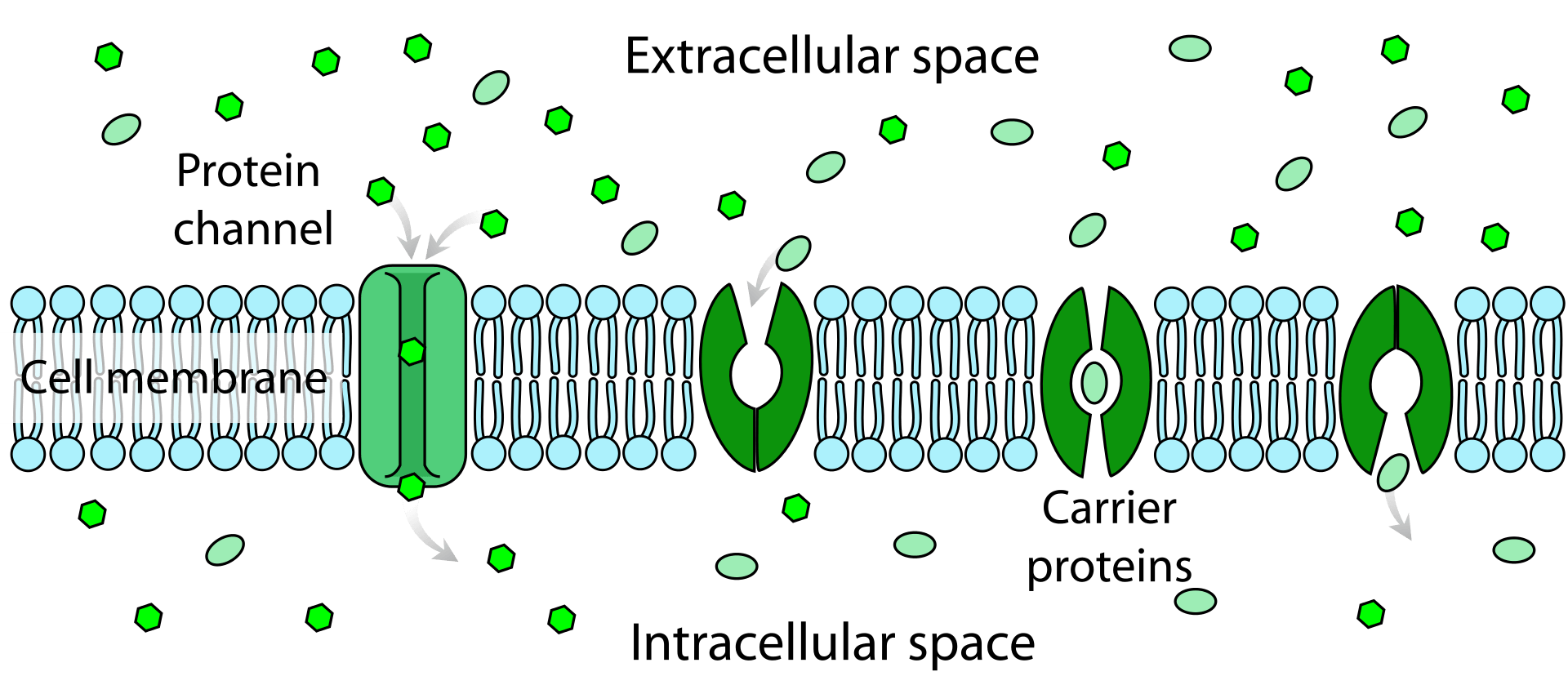
The cell membrane enables non-polar molecules (those that do not easily bind to water) to pass from the region of high concentration to the region of lower concentration. Transmembrane protein molecules called channel proteins interspersed in the membrane, assist molecules in navigating from the outer layer to the inner layer by generating diffusion-friendly gaps for molecules to pass through.
Osmosis
Osmosis is a type of passive transport that is identical to diffusion which involves a solvent passing through a selectively permeable or semi-permeable membrane from a higher concentration to a lower concentration. Such solutions are made up of two parts that are a solvent and a solute.
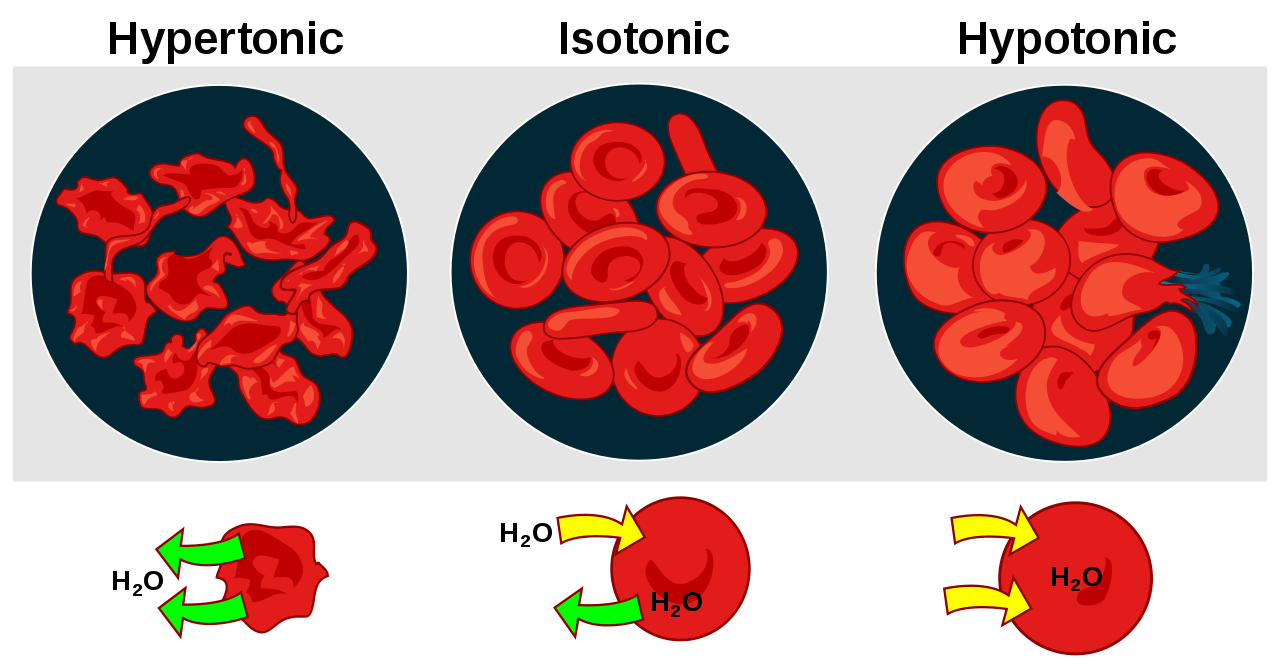
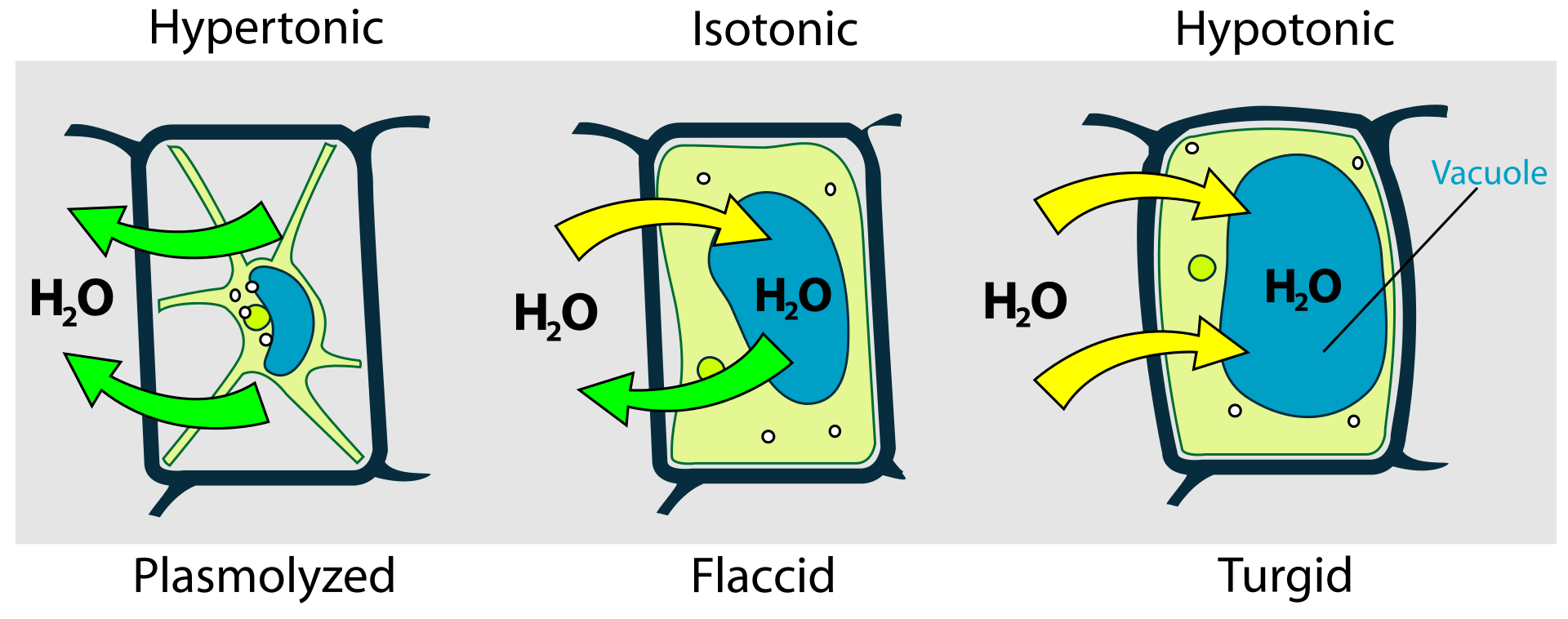
Active transport
Active transport takes place against the normal concentration gradient across a semi-permeable membrane passing from the lower concentration region to the higher concentration region and involving energy intake from the ATP molecule.
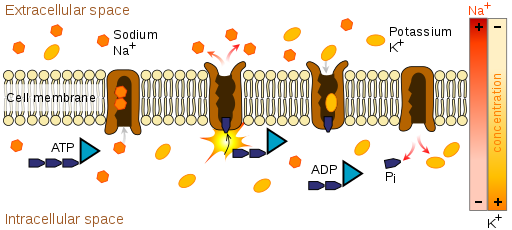
Transmembrane proteins are essential membrane-crossing proteins that can function as pathways for biological molecules. It works on both the inner and outer membranes. The membrane is crossed several times by polytopic transmembrane proteins. Some proteins are from receptors, while some are from different channels.
Passive transport is considered the transportation of ions that needs no energy, whereas active transport mechanisms need the energy to move molecules. Active transport is used regularly as ions are pumped against the concentration gradient by membrane proteins. It is a class of integral proteins i.e proteins that penetrate into or across the bilayer of the membrane are transmembrane proteins. The membrane bilayer lipid molecules are mainly hydrophobic.
Endocytosis and exocytosis
The mechanisms through which cells transfer materials into or out of the cell that is too large to specifically pass through the lipid bilayer of the cell membrane are known as endocytosis and exocytosis. Any of the substances that are moved through exocytosis and endocytosis via the cell membrane are large molecules, microorganisms, and waste products.
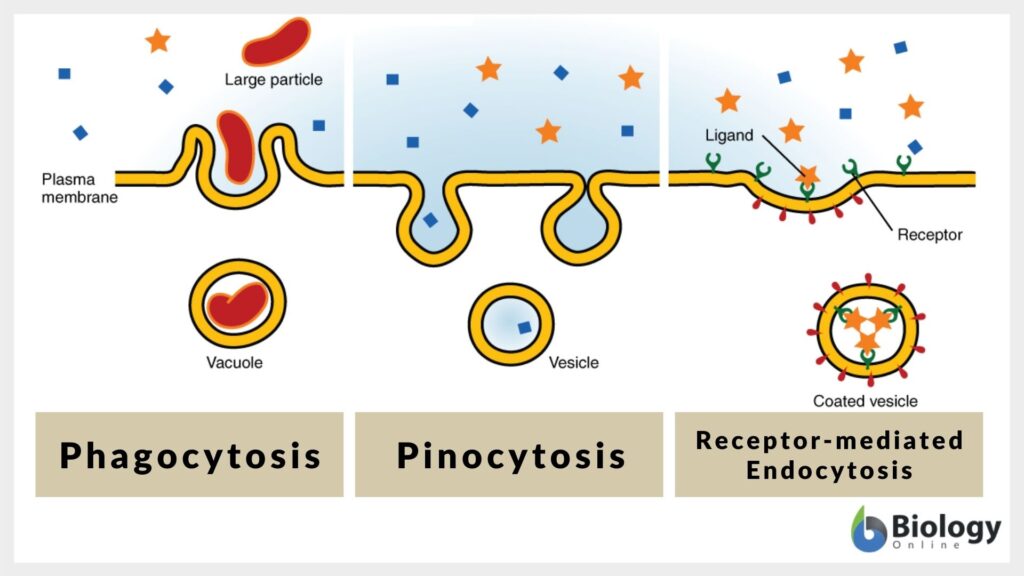
Endocytosis is a mechanism by which cells take in substances from outside the cell by invading them in a vesicle. These may include substances like cell-supporting nutrients or bacteria that engulf and kill immune cells. Endocytosis tends to happen when a part of the cell membrane is folded by itself, encircling extracellular fluid and various substances or microbes. The resulting vesicle breaks down and is transferred inside the cell.
Endocytosis performs a variety of functions, including:
- Taking nutrients for cell growth, development, and repair. Cells require functioning substances such as proteins and lipids.
- The capture of bacteria or other foreign objects that may threaten the body as the immune system detects pathogens such as microbes, they are ingested by immune cells to be destroyed.
- Disposal of old or defective cells as they quit working properly to avoid injury to other cells, these cells must be safely disposed of or eliminated by endocytosis.
Phagocytosis and pinocytosis are two types of endocytosis. Phagocytosis, sometimes known as cell eating. It is the process by which cells rationalize massive fragments or cells, such as infected cells and bacteria. In both, plant and animal cells, pinocytosis is also known as cell drinking. During pinocytosis, the cell removes substances from the extracellular fluid that it requires to function. They contain products like water and nutrients.
Exocytosis is the process through which cells shift products from the interior of the cell to the extracellular fluid. When a vesicle fuses with the plasma membrane, exocytosis occurs causing the contents to be released outside the cell.
Exocytosis has the following purpose:
- Expelling toxins or waste materials from the inside of the cell: cells produce waste or toxins that need to be eliminated from the cell to sustain homeostasis. For example, in aerobic respiration, the cells generate carbon dioxide and water waste products during the production of ATP. Water and carbon dioxide are eliminated from these cells by exocytosis.
- Promoting cellular communication: cells produce signaling molecules such as hormones and neurotransmitters. They are transferred to other cells after they have been expelled from the cell by exocytosis.
Plasma Membrane Structure
What makes up the cell or plasma membrane? The plasma membrane consists of a bilayer of phospholipids that are two back-to-back layers of phospholipids. The phospholipid bilayer that forms a steady significant barrier within the two fluids is the essential structure. The components are inside and outside of the cell, according to the cell layer. Another basic element of the cell membrane is membrane proteins that are inserted within the lipid structure. One of the primary functions of membrane proteins is associated with transport.
What are cell or plasma membranes made of? The major parts of the cell membrane are as follows:
- Phospholipids
- Proteins
- Carbohydrates
- Other Lipids
Phospholipids
Phospholipids are an important aspect of the structure of the cell membrane. The membrane consists mainly of molecules called phospholipids, which are spontaneously arranged into a double layer of externally hydrophilic (water-loving) head and internally hydrophobic (water-hating) tails. Such interactions with water are what allow the formation of plasma membranes. Hydrophobic molecules can quickly migrate through the plasma membrane if they are small enough because like the inside of the membrane, they dislike water. On the other hand, hydrophilic molecules do not pass through the plasma membrane without any support because they are water-loving.
The phospholipid bilayer diagram is shown below:
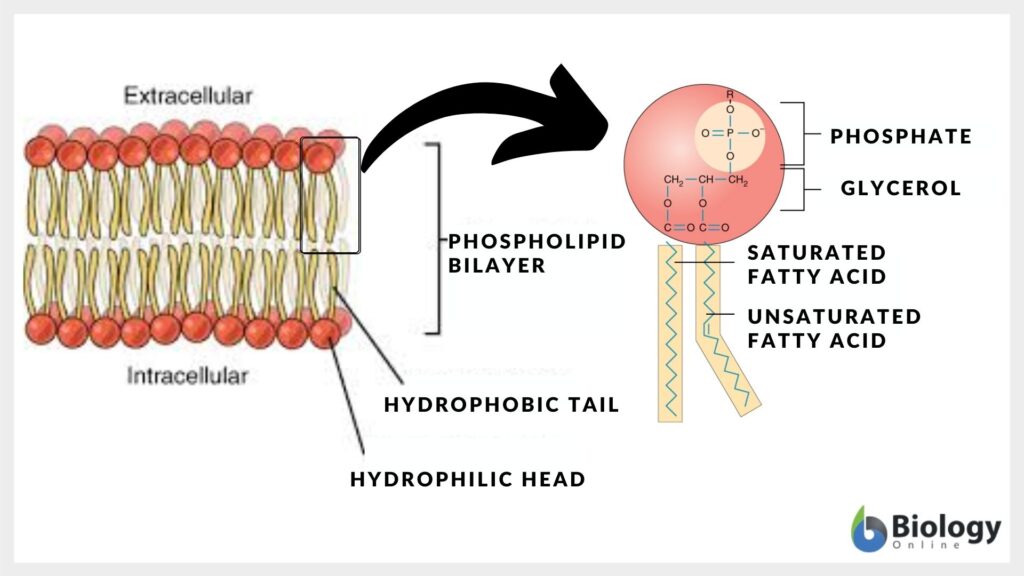
Phospholipids possess both hydrophilic and hydrophobic functions. The hydrophilic regions — phospholipid heads — are often referred to as the water-loving regions. As a lipid bilayer, the phospholipid heads of the cell membrane are exposed to internal and external fluids.
The water-fearing regions are often referred to as hydrophobic regions. This component of the lipid structure consists of large, unsaturated, and non-polar portions. Undoubtedly, unsaturated fatty acids can interact with other non-polar particles. They do not readily react with water and polar molecules. This orientation in which the hydrophilic parts of the phospholipids are on the “outside” while the hydrophobic parts are on the “inside” makes the plasma membrane an efficient barrier. Water, for instance, will not be able to simply cross the hydrophobic layer.
Proteins
There are substances other than phospholipids in the plasma membrane mainly including lipids and proteins. Cholesterol molecules assist the plasma membrane to maintain its structure. In the plasma membrane, several of the proteins allow other molecules to cross the membrane.
Certain types of proteins are also found in the plasma membranes. A membrane protein is a molecule of protein that is bound to or connected with a cell or organelle membrane. Based on how the protein is connected with the membrane it can be divided into two groups.
Integral membrane proteins are permanently fixed within the plasma membrane. They have a variety of significant functions. These functions involve channeling or transferring molecules through the membrane. Cell receptors act as other integral proteins. Based on their interaction with the bilayer, integral membrane proteins can be classified as follows:
- Transmembrane proteins occupy the whole plasma membrane. Transmembrane proteins are involved in all forms of biological membranes. Transmembrane proteins can cross the membrane only once or they may have as many as 12 different sections of membrane-spanning. 20-25 hydrophobic amino acids form a standard membrane-spanning segment.
- Integral monotopic proteins are firmly bound to the membrane on one side only.
Peripheral membrane proteins are proteins that are only temporarily attached to the membrane and play a role in cell signaling. Peripheral proteins may also be bound to an integral membrane protein or they may bind to a small part of the lipid bilayer by themselves. Sometimes, ion channels and transmembrane receptors are associated with peripheral membrane proteins. Most of the peripheral membrane proteins are hydrophilic.
Carbohydrates and lipids
Carbohydrates are one of the fundamental components of the plasma membrane. In the cell membrane, they are usually located on the outer surface of the cells and are attached either to proteins (glycoproteins) or lipids (glycolipids). These chains of carbohydrates may consist of 2-60 units of monosaccharide and can either be straight or branched.
The basic function of carbohydrates in the cell membrane is that it allows the immune system to recognize “self” from “non-self”. These carbohydrates along with membrane proteins form distinctive cellular markers — sort of like molecular ID badges that enable cells to identify each other. These markers are quite critical in the immune system, making it easier for immune cells to distinguish between body cells that they should not attack and foreign cells or tissues that they should attack. As highlighted above, carbohydrates can also move within the cells through diffusion. It only depends upon the quantity of these substances that the body wants or demands.
Glycolipid, a carbohydrate linked to a lipid, is a biomolecule in the cell membrane whose carbohydrate moiety extends to the outside of the cell. An example of a glycolipid is in the cell membrane is glycosphingolipid. Other lipids present are sterols. Sterol (e.g. cholesterol) is a lipid that provides structural integrity and fluidity in the cell membrane. Cholesterol, in particular, enables animal cells to change shape. Its presence makes the animal cells more flexible or less rigid than plant cells.
Fluid Mosaic Model
The model generally accepted for the plasma membrane structure called the fluid mosaic model was first introduced in 1972. Over time, this model has changed but it still gives a clear fundamental explanation of membrane structure and activity in many cells.
Cell membranes are described by a fluid-mosaic model because they are:
- Fluid – The bilayer of phospholipids is viscous and can move the position of individual phospholipids, cholesterol, and proteins.
- Mosaic – The phospholipid bilayer is encapsulated with proteins resulting in a mosaic of components.
Lipids (phospholipids and cholesterol), proteins and carbohydrate groups that are bound to some of the lipids and proteins are the main components of the plasma membrane. The amounts of the plasma membrane proteins, lipids, and carbohydrates vary between different cell types. However, for a standard human cell, proteins account for about 50% of the mass composition, lipids account for about 40% (of all types) and the remaining 10% comes from carbohydrates.
Membrane proteins and lipids can pass sideways across the membrane just like floats in the water or sideways around the membrane. A constant change in the “mosaic pattern” of the plasma membrane is caused by such motion.
The mosaic pattern is the result of several different bilayer components. These components include phospholipids, integral and peripheral proteins, glycoproteins, and glycolipids that facilitate food, water, waste, and other membrane movements in their location.
Try to answer the quiz below to check what you have learned so far about plasma membranes.
References
- membrane | Definition, Structure, & Functions | Britannica. (2020). In Encyclopædia Britannica. https://www.britannica.com/science/membrane-biology
- Plasma Membrane (Cell Membrane). (2020). Genome.Gov. https://www.genome.gov/genetics-glossary/Plasma-Membrane
- CK-12 Foundation. (2020). Welcome to CK-12 Foundation | CK-12 Foundation. CK-12 Foundation; CK-12 Foundation. https://www.ck12.org/book/ck-12-biology-advanced-concepts/section/3.13/
- Components and Structure | Boundless Biology. (2013). Lumenlearning.Com. https://courses.lumenlearning.com/boundless-biology/chapter/components-and-structure/
- fluid-mosaic model – General Practice Notebook. (2018). Gpnotebook.Com. https://gpnotebook.com/simplepage.cfm?ID=1624244282
©BiologyOnline. Content provided and moderated by BiologyOnline Editors.

